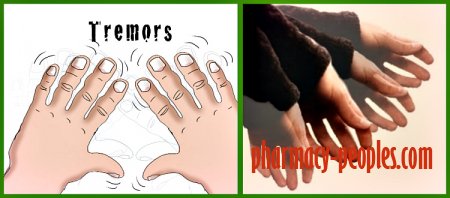6 Reasons Why Your Hands Are Shaking
You notice the shaking most in the morning, when you’re texting or drinking your coffee. Or it could be an all-the-time affliction, causing your hands to quiver whenever they’re hanging at your sides.
You’re not alone. A shaking or trembling body part—also known as a tremor—is the most common type of movement disorder, according to a 2011 study in American Family Physician. And your hands are the most likely part of your body to suffer.
What’s causing your shakes? A hand tremor can stem from a number of underlying causes, ranging from diseases like Parkinson’s to a benign caffeine overload, says Joseph Jankovic, MD, a professor of neurology and distinguished chair in movement disorders at Baylor College of Medicine.
How can you tell what’s causing your hand shaking? In many cases, you can’t. But a doctor can based on when and how your tremor shows up.
For example, you might have an “action” tremor, which is the type that manifests when you’re lifting or manipulating something with your hands, Jankovic says. This sort of tremor may be most obvious when you’re working against gravity—like when you’re eating or drinking, or trying to pick something up and hold it in front of your face. You could also have a “rest” tremor, meaning your hand moves or trembles when it’s immobile or at your side, he says.
Regardless of the type of tremor you’re dealing with, if your shakes are interfering with your ability to function or are causing you embarrassment around other people, it’s time to see someone, Jankovic says.
Here, he and other experts explain the common causes of hand tremor—and how to tell one from another.
1 Essential tremor
By far the most common form of chronic hand tremor—up to 1 in 25 people, or 4% of the population, may experience it—essential tremor is a shaking that comes on when you’re trying to perform some kind of work or action with your hands, says Gordon Baltuch, MD, PhD, a professor of neurosurgery at the University of Pennsylvania and associate director of the Parkinson’s Disease Research, Education and Clinical Center.
If your hand shakes when you’re trying to type or write, or you notice it most when you’re reaching to pick up a salt shaker or your drinking glass, that’s indicative of this form of tremor, Baltuch explains.
It can be mild—almost unnoticeable—or so pronounced that you can’t complete daily tasks. But there’s one easy way to tell if what you’re experiencing is essential tremor: Have a stiff drink. “If you do and the tremor goes away, there’s your diagnosis right there,” he says.
In fact, drinking has long been a way for people with essential tremor to manage their shaking. Baltuch says patients have come to his office inebriated, and his office staff tried to send them home. “I had to tell them no, the patient has to drink in order to function,” he says.
What causes essential tremor? “We don’t know,” he says. “We know that it runs in families, so there seems to be a genetic component, but we don’t really understand the cause of it.” He says it may be related to the way the cerebellum—a part of the brain that controls motor skills—sends and receives information. But the details are murky.
Essential tremor usually starts in one hand, often a person’s dominant hand, and eventually moves into the other hand. While your risk for essential tremor climbs as you age, it can show up at any time. “I have kids who come in with essential tremor,” Baltuch says.
What can you do about it? If it’s very mild, you don’t have to do anything. It may grow worse with age, or it may not. But leaving it untreated likely doesn’t lead to any issues down the road, he says. (These are the 6 best brain foods to eat as you age.)
If it is interfering with your life, there are drugs that can help. “The mainstay of treatment is beta blockers,” he says. “If those don’t work, some anticonvulsants may be effective.”
If drug treatments fail, some surgical operations are available. Baltuch performs a non-invasive form of ultrasound surgery that can be life-changing for patients with extreme cases.
2 Parkinson’s disease
While essential tremor is apparent when your hands are active, the type of hand movement associated with Parkinson’s is called a “rest tremor” because it shows up when the hands are idle, says Michael Rezak, MD, PhD, director of the Movement Disorders and Neurodegenerative Diseases Center at Northwestern Medicine.
“When the arm is hanging at the side, or there is no muscle tone in the arm, that’s when this kind of tremor is most prominent,” Rezak explains.
Also, while essential tremor looks more like shaking, the type of tremor associated with Parkinson’s often has a kind of rhythmic quality to it, he says. For many patients, the tremor starts as a kind of “pill rolling” motion between the thumb and index finger. (This YouTube video demonstrates what that looks like.)
Parkinson’s is a neurodegenerative disease in which certain brain cells gradually die off. While it’s not well understood why that cell die-off starts, it leads to a shortage of the brain chemical dopamine, which eventually produces tremors, as well as other motor symptoms like facial tics, poor posture, and difficulty speaking. (This is what it's like when your spouse has Parkinson's.)
Parkinson’s tends to show up during a person’s 60s or later—although a small percentage of patients develop it younger, Rezak says. There is no cure for Parkinson’s, but medications and physical activity can help.
3 Stress
Every living person has a very mild—basically, invisible—form of tremor that results from their heart beat, blood flow, and other processes going on inside their bodies. This is called a physiologic tremor. But under certain conditions, this tremor can become more pronounced, Jankovic says.
One of those situations: periods of high stress or anxiety. If your hands or voice have ever started shaking before a public speaking engagement—or if your leg was trembling when you looked over the edge of a tall building—you’ve experienced this sort of tremor, which is known as “enhanced physiologic tremor,” Jankovic explains.
It may be annoying or embarrassing, depending on the situation. But unless you’re experiencing it all the time, and so feel like it’s negatively affecting your life, you don’t have to do anything about it, he says.
If you feel like this kind of stress-induced tremor is a major problem for you, tell your doctor. Stress-relief activities like meditation, yoga, or listening to music—as well as anti-anxiety meds—can help.
4 Too much caffeine
Just as stress can heighten your normally undetectable physiologic tremor, so can caffeine, Jankovic says. If you notice your hands shaking after coffee or other sources of caffeine, it’s time to cut back—or switch to half-caff.
That said, caffeine (and stress) can also make essential tremor more noticeable, he adds. If you think your tremors are more than a simple caffeine overload, let your doctor know about it.
5 Your meds
Like stress and caffeine, some medications—notably, asthma medications like bronchodilators—can lead to hand tremors, Jankovic says. Amphetamines, some statins, and selective serotonin reuptake inhibitors (SSRIs) can also cause hand tremor.
If you notice your tremors after using your meds, or if the shaking seemed to come on when you started on a new prescription, your primary care provider should be able to offer an alternative drug that won’t make you shake.
6 Fatigue
Yet another cause of enhanced physiologic tremor: fatigue.
Whether you’re tired due to a lack of sleep or because you completed a long, grueling workout, both muscle fatigue and exhaustion are associated with tremors of the hands and other body parts, research shows. Ditto anything that can mess with your sleep—like a night of heavy drinking.
But again, fatigue can also make essential tremor more pronounced, Jankovic says. So if your hands always shake—but it becomes really bad when you’re tired or sleep-deprived—that’s worth mentioning to your doctor.






